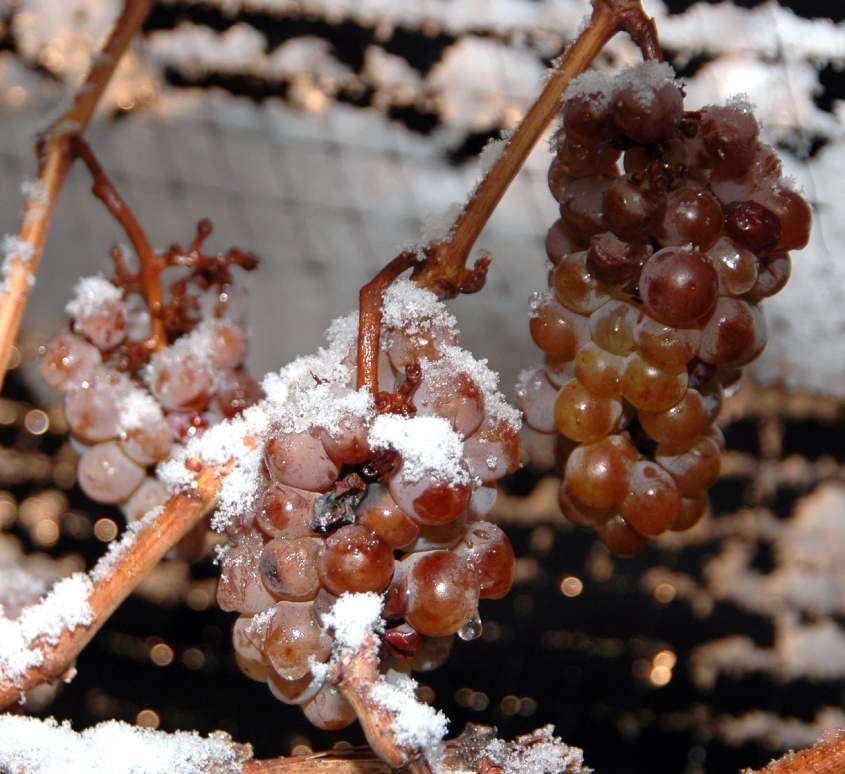
British Columbia Icewine
All good wine regions have a signature wine variety or style that becomes synonymous with the area. Napa’s is cabernet sauvignon, Burgundy’s pinot noir and the Rheingau’s is riesling. British Columbia can lay claim to a wine style, too -- icewine. Throughout the Okanagan Valley, which lies about five hours east of Vancouver, winemakers produce award-winning rich reds and floral whites. But the dessert-style icewines have put B.C. on the world’s winemaking map.
How Icewine Began
Icewines are made from grapes allowed to freeze on the vine. Why so sweet? Only grapes’ water content freezes, meaning concentrated juices are extracted from the super-cold fruit. Credit the Germans for inventing eiswein. In the late 18th century, so the story goes, a German winemaker failed to harvest his grapes in time, and his juicy berries froze on the vines. Instead of losing the crop, he decided to try making wine anyway. The result kicked off a delicious dessert-wine category. However, it wasn’t until the 1960s that other wine-producing regions discovered icewine. Hainle Vineyards and Estate Winery is credited with making Canada’s first icewine in 1974.
How Icewine is Made
In Canada, winemakers producing true icewines must follow strict standards set forth by the Vintners Quality Alliance. The VQA logo on a bottle indicates the grapes within were actually harvested while the air temperature was -8 Celsius (17.6 Fahrenheit) or colder, and that artificial refrigeration was not used in any part of the process. Although made with various types of grapes, VQA-certified icewines must contain at least 100 grams per litre of naturally occurring residual sugar, meaning winemakers may not add sweeteners. The result is a dessert-style wine that only a few regions in the world are able to produce naturally. But because of this stringent regulation, only 10 to 25 B.C. wineries per year produce certified icewine.
How to Drink Icewine
Like many dessert wines, icewine should be chilled. Pour a small glass when the wine is about 5–7 Celsius (41-45 Fahrenheit). Icewine is most commonly sold in 375 ml (12.6 ounces) half-bottles; because of the high sugar content, a “glass” of icewine should be around 59 ml (2 ounces) — less than half the typical glass of table wine. If pairing icewines with desserts, make sure the dessert is less sweet than the wine. Avoid cakes and chocolates, and opt for strong cheeses, fruits and nuts. Icewines age well, and it’s not uncommon for one to mature for 10 years or longer.
